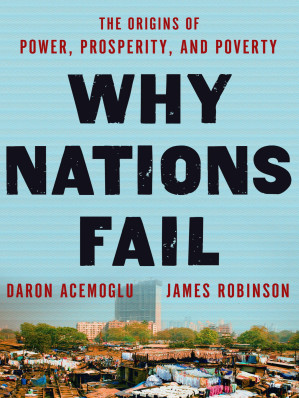r > g: When capital returns outpace economic growth, inequality inevitably rises.
When the rate of return on capital exceeds the rate of growth of output and income, capitalism automatically generates arbitrary and unsustainable inequalities.

Book summary
by Thomas Piketty
A sweeping history of wealth and inequality from the French Revolution to today
Landmark study on wealth inequality and capital dynamics globally
Topics
Read this dense economic analysis in focused sessions, using Readever to highlight key data points and economic concepts. Focus on understanding the r > g formula first, then explore the historical data patterns. Use the AI to explain complex economic terms and create personalized summaries of the policy implications for your specific interests in economics, policy, or business strategy.
Things to know before reading
French economist Thomas Piketty analyzes centuries of economic data to reveal the fundamental forces driving wealth inequality. His central argument is that when the rate of return on capital exceeds the rate of economic growth, inherited wealth grows faster than earned income, leading to extreme concentration of wealth over time.
Piketty's research reveals that capitalism naturally tends toward concentration of wealth unless counterbalanced by progressive policies.
When the rate of return on capital exceeds the rate of growth of output and income, capitalism automatically generates arbitrary and unsustainable inequalities.
The reduction of inequality that took place between 1914 and 1945 was largely accidental.
The ideal solution is a progressive annual tax on capital.
Ready to continue? Launch the Readever reader and keep turning pages without paying a cent.

Daniel Kahneman
Nobel winner explains two thinking systems shaping our decisions

Acemoğlu & Robinson
Nations succeed or fail based on inclusive vs extractive institutions

Adam Smith
Foundational text on capitalism, division of labor, and markets
This summary gives you the key insights from Piketty's monumental research, helping you understand why wealth inequality persists and grows, what historical patterns reveal about our economic future, and what policy solutions might address these challenges.
Key idea 1
When the rate of return on capital exceeds the rate of growth of output and income, capitalism automatically generates arbitrary and unsustainable inequalities.
Piketty's central formula r > g explains why wealth tends to concentrate over time. When returns on capital (r) exceed economic growth (g), those who already own capital see their wealth grow faster than the overall economy, leading to increasing inequality across generations.
Remember
Key idea 2
The reduction of inequality that took place between 1914 and 1945 was largely accidental.
Piketty shows that the mid-20th century reduction in inequality resulted from world wars, depression, and progressive taxation—not natural economic forces. As these exceptional conditions fade, we're returning to pre-1914 levels of wealth concentration.
Remember
Key idea 3
The ideal solution is a progressive annual tax on capital.
Piketty proposes a global wealth tax as the most effective solution to extreme inequality. This would reduce the concentration of inherited wealth while preserving economic incentives. He argues this is more efficient than income taxes alone.
Remember
Capital in the Twenty-First Century represents fifteen years of research analyzing economic data from twenty countries spanning three centuries. Piketty challenges the Kuznets curve theory that economic development naturally reduces inequality, showing instead that capitalism tends toward concentration of wealth unless checked by political intervention.
The book examines the historical dynamics of capital accumulation, inheritance patterns, and the relationship between capital and labor. Through meticulous data analysis from tax records, estate documents, and national accounts, Piketty reveals that the extraordinary concentration of wealth in the hands of the top 1% is not a temporary phenomenon but a structural feature of capitalist economies. His research demonstrates that wealth inequality follows a U-shaped pattern over the long term, with the mid-20th century representing an exceptional period of reduced inequality rather than a permanent trend.
Open Readever's reader to highlight passages, ask the AI companion questions, and keep exploring without paying a cent.
Piketty's work is both monumental in scope and meticulous in detail. While some economists question his policy prescriptions, few dispute the quality of his historical data analysis. The book has sparked global debate about inequality and prompted renewed interest in wealth taxation. Its accessibility to non-economists makes complex economic concepts understandable through clear historical narratives. The translation by Arthur Goldhammer preserves the academic rigor while making the text approachable for general readers. Critics praise the comprehensive dataset spanning three centuries but note that some of Piketty's predictions about future inequality trends remain speculative.
Policy makers and economists concerned about wealth inequality.
Business leaders wanting to understand long-term economic trends.
Students of economics, history, and political science.
Anyone interested in the future of capitalism and democracy.
Thomas Piketty is a French economist who works on wealth and income inequality. He is a professor at the Paris School of Economics and former director of studies at the École des Hautes Études en Sciences Sociales (EHESS). Born in 1971, Piketty completed his PhD at the École des Hautes Études en Sciences Sociales and later taught at MIT and the London School of Economics. His previous work focused on historical wealth distribution, and Capital in the Twenty-First Century represents the culmination of this research program. Piketty has advised governments on economic policy and continues to write extensively on inequality, capital, and progressive taxation.
Build your personalized reading stack
Download full-length ePubs in one click with personal cloud storage.
Blend AI-guided insights with tactile note-taking to accelerate reflection.
Follow curated reading journeys tailored to your goals and time budget.
Sync highlights across devices so lessons stick beyond the page.
Sign in to Readever to keep reading with AI guidance, instant summaries, and synced notes.
Capital in the Twenty-First Century provides a powerful framework for understanding the structural forces driving wealth inequality. While controversial in its policy prescriptions, its historical analysis and data-driven approach have fundamentally changed how economists and policymakers think about inequality, capital, and the future of democratic societies.
Capital in the Twenty-First Century represents a paradigm shift in how we understand economic inequality. Piketty's work demonstrates that wealth concentration is not an aberration but a fundamental feature of capitalism that requires deliberate policy intervention to address.
The book's lasting contribution lies in its comprehensive historical dataset and the clear theoretical framework of r > g, which provides a powerful tool for analyzing economic trends and designing policies to create more equitable societies while preserving economic dynamism.

Friedrich Nietzsche
Philosophical novel introducing Übermensch concept and eternal recurrence

Matthew Walker
Unlocking sleep's power for health, memory, and well-being

Gottman & Silver
Gottman's research-based approach to creating lasting marital happiness
Start reading Capital in the Twenty-First Century for free and unlock personalized book journeys with Readever.